-
 Bitcoin
Bitcoin $94,278.5922
6.45% -
 Ethereum
Ethereum $1,797.1232
10.54% -
 Tether USDt
Tether USDt $1.0002
0.01% -
 XRP
XRP $2.2670
7.73% -
 BNB
BNB $614.2436
1.34% -
 Solana
Solana $151.9383
8.27% -
 USDC
USDC $0.9999
-0.01% -
 Dogecoin
Dogecoin $0.1828
11.30% -
 Cardano
Cardano $0.7030
10.29% -
 TRON
TRON $0.2470
-0.43% -
 Chainlink
Chainlink $14.8244
10.70% -
 Avalanche
Avalanche $22.8997
12.31% -
 Sui
Sui $2.9296
26.96% -
 UNUS SED LEO
UNUS SED LEO $9.0638
-1.24% -
 Stellar
Stellar $0.2698
8.57% -
 Shiba Inu
Shiba Inu $0.0...01374
9.05% -
 Hedera
Hedera $0.1866
7.35% -
 Toncoin
Toncoin $3.1056
5.42% -
 Bitcoin Cash
Bitcoin Cash $361.8887
4.25% -
 Polkadot
Polkadot $4.1128
8.54% -
 Litecoin
Litecoin $84.5063
5.70% -
 Hyperliquid
Hyperliquid $18.9705
4.02% -
 Bitget Token
Bitget Token $4.6210
3.76% -
 Dai
Dai $0.9999
0.00% -
 Ethena USDe
Ethena USDe $0.9993
0.01% -
 Pi
Pi $0.6719
6.31% -
 Monero
Monero $225.8833
4.37% -
 Pepe
Pepe $0.0...09103
11.52% -
 Uniswap
Uniswap $5.9626
10.31% -
 Aptos
Aptos $5.3332
9.31%
How to avoid the problem of "excessive price slippage" encountered by Kraken exchange?
Minimize Kraken slippage by using limit orders, optimizing order sizes, and avoiding volatile markets; leverage Kraken's tools for market analysis and diverse trading strategies.
Mar 23, 2025 at 09:00 am
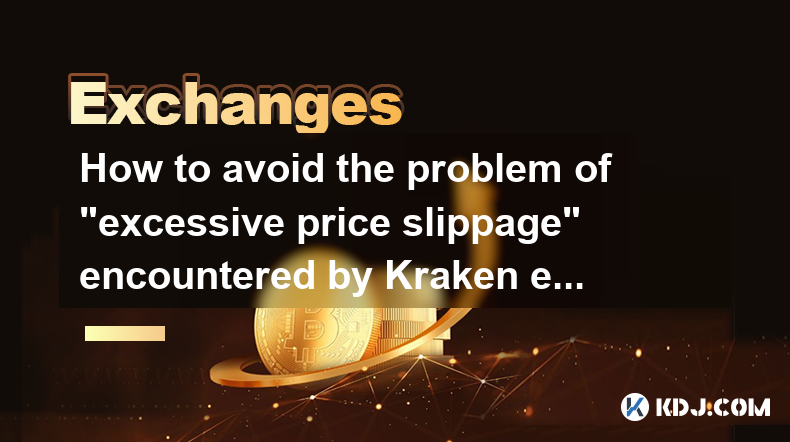
Key Points:
- Understanding Price Slippage on Kraken
- Minimizing Slippage Through Order Types
- Choosing Optimal Order Sizes
- Importance of Market Timing and Volatility Awareness
- Utilizing Trading Tools and Features on Kraken
- Diversifying Trading Strategies
How to Avoid the Problem of "Excessive Price Slippage" Encountered by Kraken Exchange?
Price slippage, the difference between the expected price and the actual execution price of a trade, is a common concern for cryptocurrency traders on all exchanges, including Kraken. Several factors contribute to slippage, and understanding these factors is crucial for minimizing its impact. This article explores effective strategies to mitigate excessive slippage when trading on Kraken.
Understanding Price Slippage on Kraken
Slippage primarily occurs due to market volatility and order book depth. High volatility means prices change rapidly, making it harder to execute trades at your desired price. Low order book depth (few buy or sell orders available at a specific price) also increases the chance of slippage, as your order might move the market price significantly. Large orders are particularly vulnerable.
Minimizing Slippage Through Order Types
Kraken offers various order types designed to manage slippage. Understanding and utilizing these is key.
- Market Orders: These execute immediately at the best available price, but are highly susceptible to slippage, especially during volatile periods. Avoid using them for large trades.
- Limit Orders: These allow you to specify a price at which you're willing to buy or sell. This helps control slippage but may result in your order not being filled if the price doesn't reach your specified level.
- Stop-Limit Orders: Combine the features of stop and limit orders, offering better control than a simple stop order by adding a price limit.
- Fill-or-Kill (FOK) Orders: These are executed entirely or not at all. Excellent for avoiding partial fills but risky if the market conditions aren't favorable.
Choosing Optimal Order Sizes
The size of your order directly impacts slippage. Large orders can significantly move the market price, leading to greater slippage. Breaking down large orders into smaller, more manageable ones helps mitigate this risk. This approach allows for better price execution across multiple trades. Consider your trading capital and the market liquidity before placing large orders.
Importance of Market Timing and Volatility Awareness
Market timing is crucial in minimizing slippage. Avoid trading during periods of extreme volatility or low liquidity. News events, major announcements, and weekends often exhibit higher volatility. Monitoring market depth and order book activity can provide insights into current liquidity.
Utilizing Trading Tools and Features on Kraken
Kraken offers advanced charting tools and indicators that can help predict market movements and volatility. Utilize these tools to improve your timing and reduce the likelihood of significant slippage. Familiarize yourself with Kraken's order book visualization to assess market depth and liquidity before executing trades.
Diversifying Trading Strategies
Don't rely solely on one trading strategy. Diversification extends to your trading approaches as well. Explore different order types, utilize various technical indicators, and consider different timeframes for your trades. This reduces reliance on a single approach susceptible to slippage.
Advanced Techniques for Minimizing Slippage
Algorithmic trading and the use of sophisticated trading bots can help minimize slippage by automatically executing trades at optimal times and prices. However, this requires technical expertise and carries its own risks.
Understanding the Order Book
The order book is a critical tool for assessing liquidity and potential slippage. Learning to interpret it allows you to anticipate price movements and make informed decisions about order size and type. Kraken's order book interface provides detailed information about buy and sell orders at various price levels.
The Role of Trading Fees
While not directly slippage, trading fees can indirectly influence your overall cost. High fees can exacerbate the impact of slippage, so comparing Kraken's fees with other exchanges is worthwhile.
Frequently Asked Questions:
Q: What is the average slippage on Kraken? There's no single average slippage percentage for Kraken. It depends heavily on the asset, order size, market conditions, and order type.
Q: How can I avoid slippage when trading large amounts? Break down your large orders into smaller orders executed over time. Use limit orders instead of market orders.
Q: Does Kraken offer any tools to help reduce slippage? Yes, Kraken provides various order types (limit, stop-limit, etc.), charting tools, and order book visualization to help you manage slippage.
Q: Is slippage always bad? Not necessarily. Small amounts of slippage are normal in active markets. Excessive slippage is what traders want to avoid.
Q: What is the difference between slippage and spread? Spread is the difference between the best bid and ask prices. Slippage is the difference between the expected execution price and the actual execution price. Spread contributes to slippage.
Disclaimer:info@kdj.com
The information provided is not trading advice. kdj.com does not assume any responsibility for any investments made based on the information provided in this article. Cryptocurrencies are highly volatile and it is highly recommended that you invest with caution after thorough research!
If you believe that the content used on this website infringes your copyright, please contact us immediately (info@kdj.com) and we will delete it promptly.
- title: Bitcoin (BTC) price reaches six-week high as US-based BTC ETFs record $936.4 million net inflow
- 2025-04-23 16:45:12
- Bitcoin Surpasses $93,000 Again
- 2025-04-23 16:45:12
- Trump Media and Crypto.com to Launch a Series of Exchange-Traded Funds
- 2025-04-23 16:40:12
- Richard Heart, Founder of HEX and PulseChain Crypto Projects, Wins Rare Legal Victory Against the SEC
- 2025-04-23 16:40:12
- Immutable (IMX) Token Price Skyrockets 44%
- 2025-04-23 16:35:12
- The saying “A rising tide lifts all boats” perfectly captures the current state of the crypto market
- 2025-04-23 16:35:12
Related knowledge
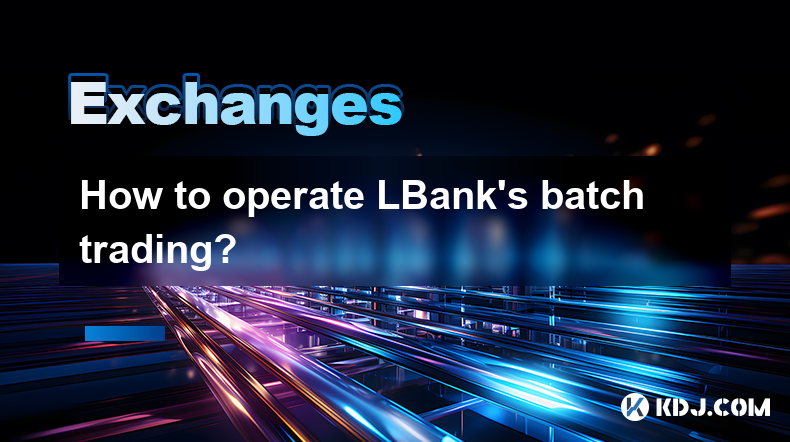
How to operate LBank's batch trading?
Apr 23,2025 at 01:15pm
LBank is a well-known cryptocurrency exchange that offers a variety of trading features to its users, including the option for batch trading. Batch trading allows users to execute multiple trades simultaneously, which can be particularly useful for those looking to manage a diverse portfolio or engage in arbitrage opportunities. In this article, we will...
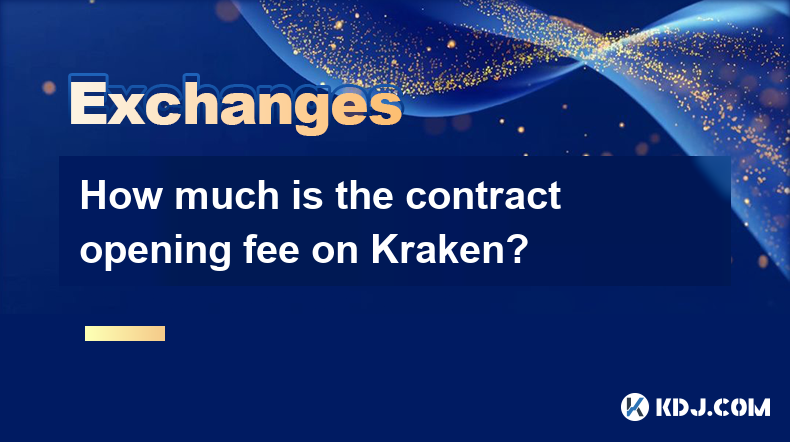
How much is the contract opening fee on Kraken?
Apr 23,2025 at 03:00pm
When engaging with cryptocurrency exchanges like Kraken, understanding the fee structure is crucial for managing trading costs effectively. One specific fee that traders often inquire about is the contract opening fee. On Kraken, this fee is associated with futures trading, which allows users to speculate on the future price of cryptocurrencies. Let's d...

How to use cross-chain transactions on Kraken?
Apr 23,2025 at 12:50pm
Cross-chain transactions on Kraken allow users to transfer cryptocurrencies between different blockchain networks seamlessly. This feature is particularly useful for traders and investors looking to diversify their portfolios across various blockchains or to take advantage of specific opportunities on different networks. In this article, we will explore...

How to view the fee level of a trading pair on Bitfinex?
Apr 23,2025 at 12:56pm
How to View the Fee Level of a Trading Pair on Bitfinex? Bitfinex is one of the leading cryptocurrency exchanges, offering a wide range of trading pairs and features for traders. Understanding the fee structure is crucial for any trader looking to optimize their trading strategy. This article will guide you through the process of viewing the fee level o...
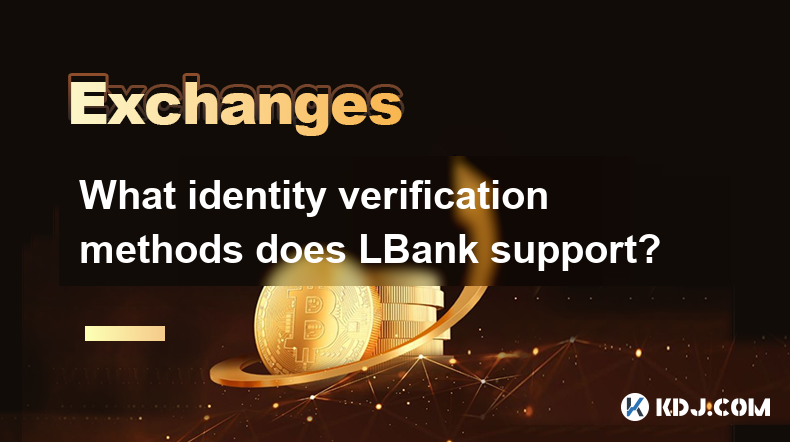
What identity verification methods does LBank support?
Apr 23,2025 at 02:08pm
LBank, a prominent cryptocurrency exchange, offers several methods for identity verification to ensure the security and compliance of its platform. Understanding these methods is crucial for users who wish to engage in trading and other activities on LBank. This article will delve into the various identity verification methods supported by LBank, provid...
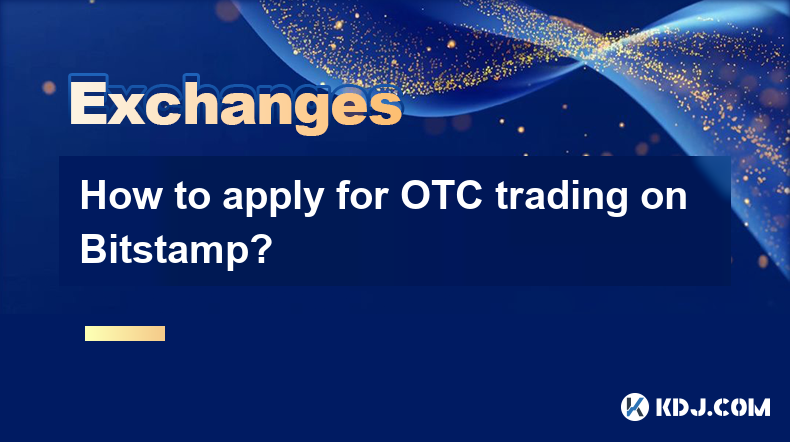
How to apply for OTC trading on Bitstamp?
Apr 23,2025 at 10:56am
Applying for OTC (Over-The-Counter) trading on Bitstamp involves a series of steps that allow you to engage in high-volume cryptocurrency transactions. OTC trading is particularly useful for traders and institutions looking to execute large orders without significantly impacting the market. This guide will walk you through the process of applying for OT...

How to operate LBank's batch trading?
Apr 23,2025 at 01:15pm
LBank is a well-known cryptocurrency exchange that offers a variety of trading features to its users, including the option for batch trading. Batch trading allows users to execute multiple trades simultaneously, which can be particularly useful for those looking to manage a diverse portfolio or engage in arbitrage opportunities. In this article, we will...

How much is the contract opening fee on Kraken?
Apr 23,2025 at 03:00pm
When engaging with cryptocurrency exchanges like Kraken, understanding the fee structure is crucial for managing trading costs effectively. One specific fee that traders often inquire about is the contract opening fee. On Kraken, this fee is associated with futures trading, which allows users to speculate on the future price of cryptocurrencies. Let's d...

How to use cross-chain transactions on Kraken?
Apr 23,2025 at 12:50pm
Cross-chain transactions on Kraken allow users to transfer cryptocurrencies between different blockchain networks seamlessly. This feature is particularly useful for traders and investors looking to diversify their portfolios across various blockchains or to take advantage of specific opportunities on different networks. In this article, we will explore...

How to view the fee level of a trading pair on Bitfinex?
Apr 23,2025 at 12:56pm
How to View the Fee Level of a Trading Pair on Bitfinex? Bitfinex is one of the leading cryptocurrency exchanges, offering a wide range of trading pairs and features for traders. Understanding the fee structure is crucial for any trader looking to optimize their trading strategy. This article will guide you through the process of viewing the fee level o...

What identity verification methods does LBank support?
Apr 23,2025 at 02:08pm
LBank, a prominent cryptocurrency exchange, offers several methods for identity verification to ensure the security and compliance of its platform. Understanding these methods is crucial for users who wish to engage in trading and other activities on LBank. This article will delve into the various identity verification methods supported by LBank, provid...

How to apply for OTC trading on Bitstamp?
Apr 23,2025 at 10:56am
Applying for OTC (Over-The-Counter) trading on Bitstamp involves a series of steps that allow you to engage in high-volume cryptocurrency transactions. OTC trading is particularly useful for traders and institutions looking to execute large orders without significantly impacting the market. This guide will walk you through the process of applying for OT...
See all articles
























































































